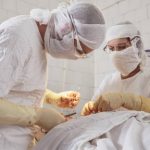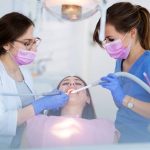New Technologies in Dentistry
Various new technologies are disrupting existing industries and providing new services/products for consumers. The dental industry is no different, benefiting greatly from new technology. One of the main benefits of various new dental tech is that the time and cost savings are passed on directly to the consumer.
3D Printing
3D printing has become wildly popular in the last several years. As the technology matures, it stands to disrupt a huge amount of industries.
But what is it?
3D printing is the layering of chemicals on top of each other to make an object. The blueprints for the items that are 3d printed are stored in digital files that can be read by a large range of programs and machines. The files are easy to transfer, so it is easy to send the files somewhere and design and print 3D items in different locations. Already 3D printing is being used to make houses, replacement parts for machines, surgical implants, and even food.
In dentistry, 3D printing can be used for dental implants. Why is this a benefit to consumers though? Before 3D printing, a dentist had to make precise measurements of an implant and then send those measurements to a lab for design. The whole process could take weeks or months. With 3D printing the process can be completed in hours. A patient might go to the dentist and walk out on the same day with new, custom-built, 3D printed implants.
You can find in-depth information about 3D printing in dentistry on our site.
Intraoral Camera
In recent years camera technology has become smaller, and much more prevalent. Computers and phones all have cameras now, and small, cheap home security systems are commonplace. Medicine is no different. There are numerous small cameras that doctors can use to see inside of people without having to resort to more invasive procedures.
Dentistry is no different. Intraoral cameras are small, maneuverable, cameras that can get detailed and precise videos of the inside of the mouth. These cameras can be used for taking measurements for implants, and scanning for diseases. The video can also be shown to patients to give them a clear idea of their own oral health. Finally, intraoral cameras enable the dentists to perform checkups quickly and with greater accuracy than before. The time saved and increase in precision passes directly on to the patient, who gets better, quicker service.
Laser Dentistry
Lasers are specialized tools that deliver energy in the form of light. The light emission is pointed, precise, and focused. Lasers are used in everything from computers to land surveying. Now, they are finding a place in dentistry as well.
When used in dentistry and surgery, lasers cut and vaporize flesh that they come in contact with. They also function as heating sources which enable tooth-bleaching agents to work. Some advantages that consumers get from lasers are: less pain than normal procedures, minimal bleeding and swelling, and better tooth preservation during cavity removal. Although lasers are a promising new technology in dentistry, they have their drawbacks. One of the biggest is the high cost of using a dental laser can get up to $100,000. Read more about the pros and cons of laser dentistry here.
Smart Toothbrushes
You’ve almost certainly heard of smart devices. Smart phones, smart houses, smart watches…the list goes on. But what are smart devices? In short, smart devices collect data and process it into usable information. Smart watches can measure your walking distance and heart rate, enabling you to get a good idea of your general health. Smart houses will study you and the environment, doing things like dimming lights automatically at night, drawing the shades, and scheduling cleaning.
Smart toothbrushes can scan your mouth, finding areas of plaque build up and tooth decay. They also can remind you of proper brushing time and technique, as well as keep track of how often you brush. Added apps and games can even help children learn proper brushing techniques.
Teledentistry
Telemedicine is the use of video technology to remotely perform medical procedures. In Italy, remote surgery was recently successfully performed from over 10 miles away using 5G.
Dentistry is a science that is set to benefit greatly from Teledentistry. Some potential applications include:
- Check-ups performed by doctors in remote locations
- Surgeries and implants performed remotely
- Dental healthcare access for people in remote places
- Dental access for those who don’t usually have enough money for proper dental treatment
As robotics technology and communications infrastructure improve, we suspect the world will see much more teledentistry.
Digital X-Rays
Digital X-rays are faster, and contain much less radiation than traditional X-rays. This means that after a scan, a digital X-ray can show up on-screen in a matter of minutes. Thanks to higher resolution, the dentist can zoom in and more accurately assess dental health as well. Finally, digital X-rays expose patients to 90% less radiation than traditional X-rays.
High Tech Dentistry
If you are looking to get some work done, or maybe just need a check-up, consider Dr. Ku, D.D.S. We are an award-winning dental office in the Fort Worth area with a great track-record on patient service. Dr. Ku keeps up on the latest trends in dental technology, to ensure the best service possible to his clients. If you want to visit a dentist, or just have questions about what dental technology we use, contact us today.






